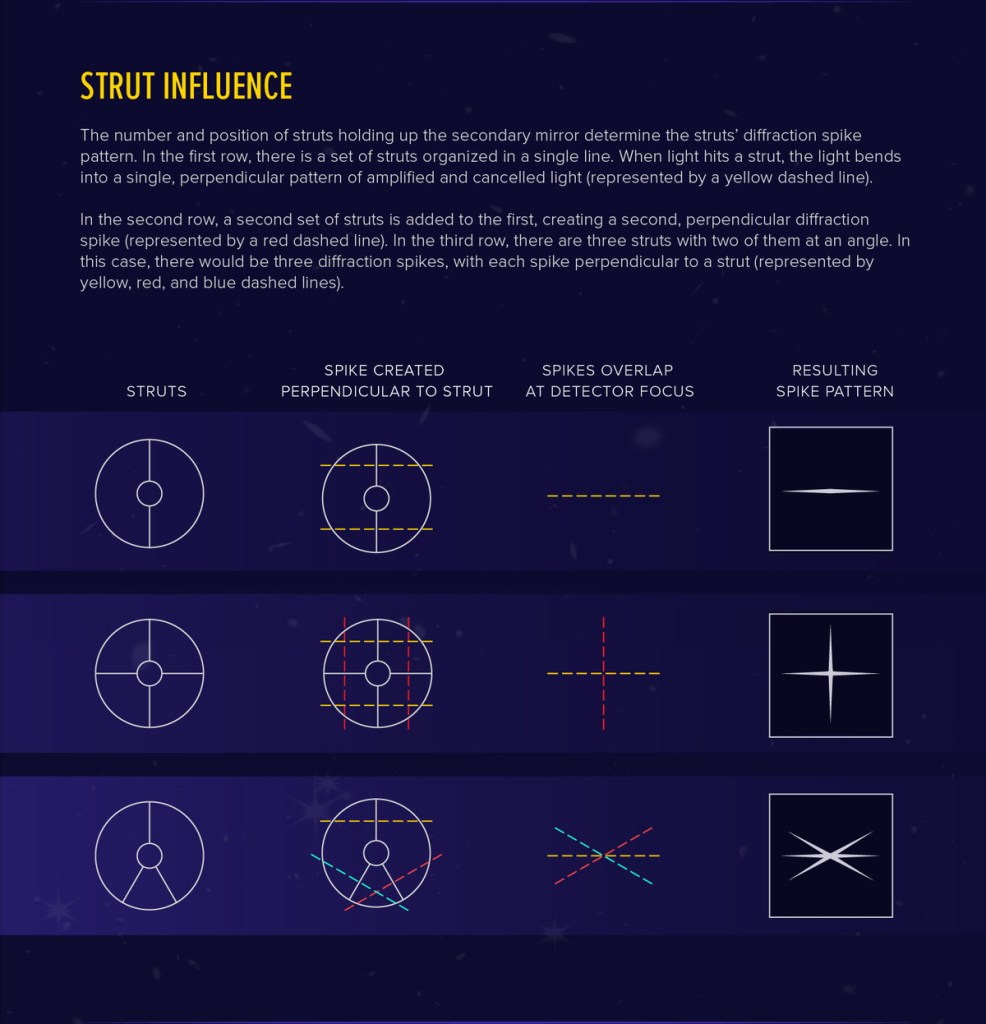
More than Meets the Eye
The difference between Hubble and Webb images is more than simple clarity or resolution. Here is a simple way to tell the difference between images taken by the older. The most glaring difference—pun intended—are the eight-pointed diffraction spikes jutting out from some stars in the image.
Telling the Difference Between Hubble &Webb Images
Eight-Pointed Diffraction Spikes
Diffraction spikes—the flares pointing out from some of the brightest stars—are interference patterns that come from light scattered off mirror struts that support the secondary mirror on the telescope. The edges of all the eighteen hexagonal mirrors on the Webb create additional diffraction patterns. Since these flares result from interference patterns, the intensity of the spikes depends on the brightness and wavelength of the object observed.





One More Difference: The Snowflake Pattern
The image below does not show a new type of star or an alien spacecraft. The snowflake-like arrangement in the star appears to mimic the mirror’s structure in various colors. Different wavelengths show as separate variations of the interference patterns.

More about Space Telescopes
- A really cool way to compare images from the Hubble and the James Webb space telescopes is to view their images side-by-side. You can see that in the post 3 Amazing Hubble and Webb Telescope Images Side-by-Side.
- And just for grins, check out the Startling Webb Telescope Image of Doomsday Machine – Parody.
By clicking submit, you agree to share your email address with the site owner and Mailchimp to receive updates and other emails from John Newton. Use the unsubscribe link in those emails to opt out at any time.




